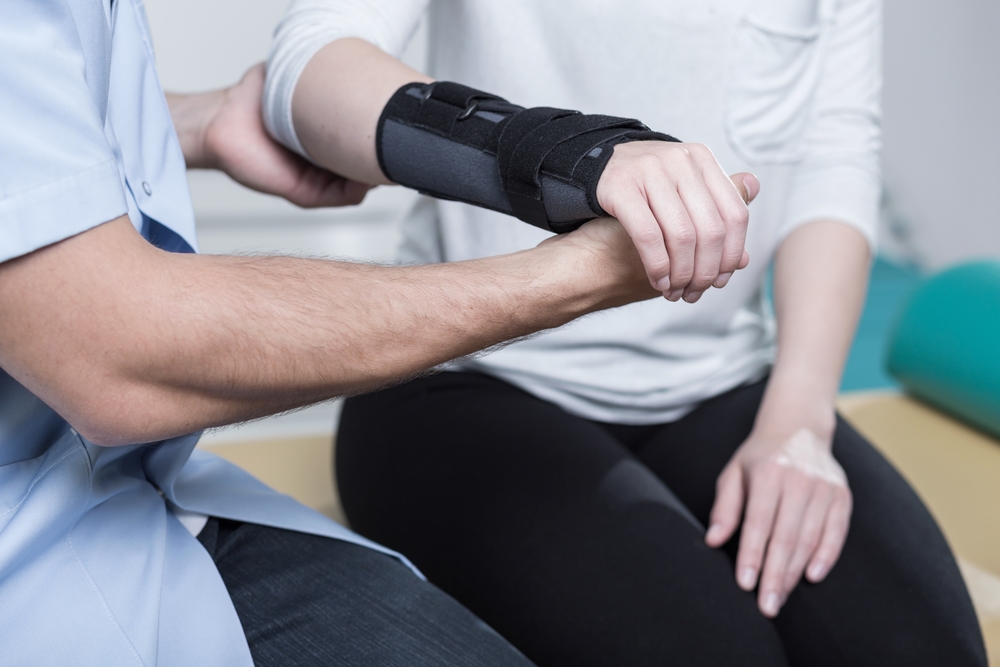A scaphoid fracture is a very common injury which, if left untreated or misdiagnosed, can cause a variety of adverse outcomes that can be linked back to clinical negligence.
In fact, the scaphoid bone is the most commonly fractured carpal bone in the human body.
Unfortunately, scaphoid fractures can be more challenging to identify and is commonly missed or misdiagnosed.
Therefore, it is important to make sure that the right treatment is provided in a timely manner.
What is the correct initial response?
When visiting your GP or emergency department, it is important that the medical expert takes thorough notes relating to what happened and what your initial symptoms are.
This is because a scaphoid fracture most commonly results from a fall on an outstretched hand, causing tenderness directly over the bone.
Your initial pain may decrease over days or weeks and may increase when you move your thumb or grip things.
Scaphoid fractures usually do not cause bruising or significant swelling, which is the reason they are often mistaken for a sprained wrist.
Physical Examination and Diagnosis of a Scaphoid Fracture
Your doctor can diagnose a scaphoid fracture by examining your wrist and taking specific x-rays.
When examining a patient with a suspected scaphoid injury, it is important to compare the injured wrist with the uninjured wrist, although further testing will be required to assess the wrist injury more carefully.
If a fracture is suspected, an x-ray should be requested.
In saying that, scaphoid fractures do not always show up on initial x-rays, particularly if specific views are not sought or if the x-rays are taken immediately after the injury.
If there remains a high index of suspicion, the wrist should be immobilised in a splint and further imaging should be sought.
This could be achieved by repeating dedicated x-ray views of the scaphoid at 10-14 days after the injury or performing an MRI scan.
What treatment can be expected?
Treatment depends on the location, fracture type and fracture location in the bone
For example, fractures located near the thumb (distal pole) heal well with casting while fractures in areas with poor blood supply and displaced fractures generally require surgery.
How to identify scaphoid fracture negligence
Despite scaphoid fractures being a common injury, it is often misdiagnosed as a sprained wrist or similar less serious injury.
To avoid medical professionals missing a scaphoid fracture diagnosis, it is necessary they exercise a high index of suspicion; conducting a thorough history review and physical examination when a scaphoid fracture is possible.
This thorough examination is particularly important in these cases, as early imaging is often unrevealing.
If the appropriate tests did not take place, and/or follow up testing was not arranged when a scaphoid fracture cannot be excluded, it is likely that the doctor has breached his/her duty of care.
Risks of an undiagnosed scaphoid fracture
Scaphoid fractures are significant because a delay in diagnosis can lead to a variety of adverse outcomes that may include:
- Non-union
- Delayed union
- Decreased grip strength
- Decreased range of motion
- Osteoarthritis of the radiocarpal joint
How to reduce the impact of a scaphoid fracture?
Those with this fracture can improve prognosis and avoid adverse outcomes by:
- Timely diagnosis
- Appropriate immobilization
- Imaging such as x-rays and/or MRIs
If you feel you have experienced medical negligence, we recommend you speak with a lawyer experienced in dealing with medical negligence cases such as the team at Medical Negligence Solutions.
Phone 0300 303 3634 for obligation-free advice or start your claim today.







